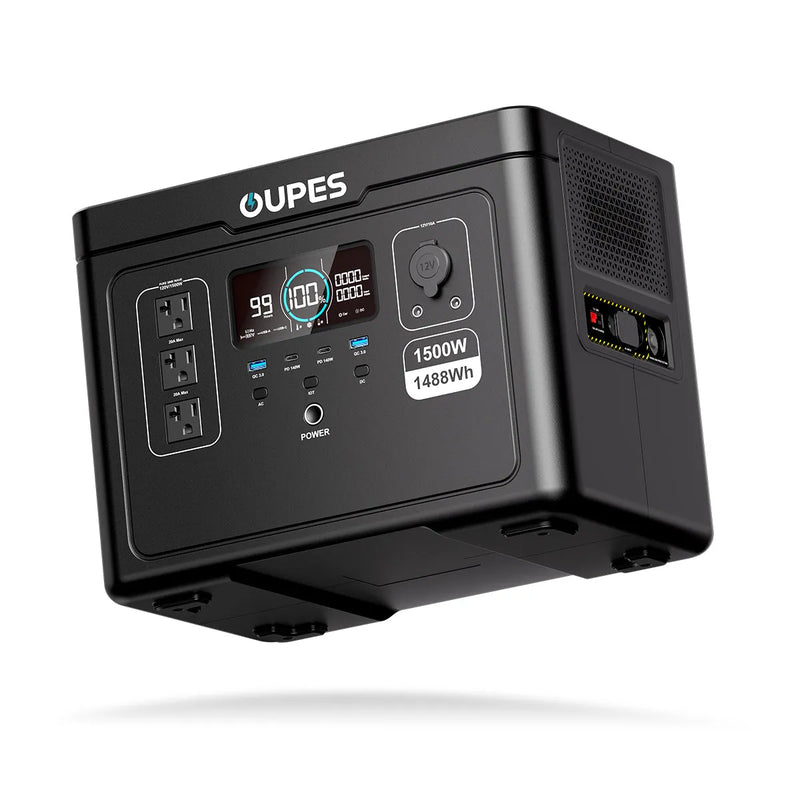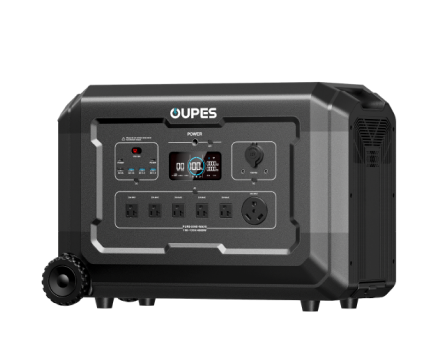
Ever wondered how much electricity a solar panel can actually produce? Whether you're planning to power your home, charge a portable generator, or go off-grid, it’s not enough to just know the panel’s Watt rating. Real-world output depends on sunshine intensity, panel quality, tilt angle, temperature, and more. Let’s dive into the details so you can estimate solar energy production with confidence.
In this guide, we'll explore the theoretical and practical energy output of solar panels across different environments and use cases. By understanding these factors, you'll be better equipped to plan solar systems—like those powering OUPES solar generators—whether for emergencies, everyday use, or sustainable independence.
Understanding Solar Panel Watt Ratings and Peak Output
Every solar panel comes with a specified wattage rating, such as 100W, 250W, or 400W, which indicates its peak power output under ideal laboratory conditions—known as STC (Standard Test Conditions). These conditions include a temperature of 25°C (77°F), unrestricted sunlight at 1,000W/m², and solar spectrum AM1.5.
In reality, most panels rarely operate exactly at their STC rating. Factors such as shade, dirt, temperature fluctuations, and degraded sunlight angles affect performance. For example, high temperatures can reduce a panel’s efficiency by 0.3% to 0.5% per °C above 25°C. So on a hot day, a 300W panel might generate only 85–90% of its rated output.
Despite variations, the watt rating remains a reliable starting point for system design. If a utility-grade panel is rated at 300W, you can expect roughly 20–30 kWh per month from one panel under average conditions, depending on your location and usage patterns. This figure scales directly with the number of panels and solar hours available.
High-quality solar systems such as those integrated with OUPES generators are engineered to maximize these outputs using efficient converters (like MPPT charge controllers) and optimized load management—ensuring you get as close to theoretical performance as possible in real-world settings.
How Sunlight Hours and Geographic Factors Impact Energy Production
Watt rating alone doesn’t determine your energy yield—it must be multiplied by effective sunlight hours. "Peak Sun Hours" (PSH) indicate the equivalent number of hours per day during which solar irradiance averages 1,000W/m². Regions like Arizona may get 6–7 PSH, while cloudier areas like the Pacific Northwest average 3–4.
If you have a 300W panel and receive 5 PSH, ideal daily output is 1.5 kWh (300W × 5h). Monthly, that adds up to about 45 kWh. Doubling the panel count or increasing PSH—via tilt, tracking systems, or optimal placement—can significantly boost output.
Seasonal shifts matter too. Summer days are longer and brighter, meaning higher production, while winter yields may dip significantly. Using a combination of panel orientation, seasonal angle adjustment, and storage systems such as OUPES generators helps smooth out these fluctuations.
Location also matters—altitude, latitude, and weather patterns influence both insolation and temperature. High-altitude locations often enjoy cooler temperatures and less cloud cover, increasing overall solar efficiency. Coastal or monsoon regions may face heavy seasonal rainfall, impacting performance. Knowing your climate and PSH is essential for accurate system sizing and energy budgeting.
Adjusting for Real-World Variables: Tilt, Shading, and Panel Type
Panel tilt and orientation significantly influence energy harvest. Solar panels generate maximum energy when sunlight strikes them perpendicularly. An optimal tilt equals your latitude, adjusted seasonally—tilt higher for winter, lower for summer—to capture more effective sun angles.
Shading—whether from trees, buildings, or debris—can reduce output dramatically, since many solar systems are wired in series. Using microinverters or power optimizers helps minimize this impact by isolating shaded panels from the performance of the entire array.
Panel types also influence performance. Monocrystalline panels offer higher efficiency (18–22%), while polycrystalline panels are less efficient (15–18%) but cost-effective. Thin-film and bifacial panels offer niche advantages like light reflection harvesting but typically yield lower per-square-foot energy. OUPES-compatible solar kits often use monocrystalline panels for their combination of performance, durability, and portability.
Degradation over time—typically about 0.5%–1% efficiency loss per year—must also be accounted for in long-term planning. Cleaning panels regularly and keeping them shade-free helps preserve output and ensures longevity.
Maximizing Energy Use with Solar Generators and Storage
Solar panels alone only produce energy; without storage, the electricity goes unused after sundown. Pairing solar panels with energy storage systems—like OUPES solar generators—completes the cycle. During daylight, panels charge the battery, and then you can power devices or appliances continuously, even at night.
To estimate energy needs: list your essential devices (fridge, lights, CPAP, etc.) in watt hours per day. Divide this by your system’s daily solar yield to determine how many panels and battery capacity you require. For instance, if your daily need is 3 kWh and you generate 4.5 kWh, you'll have surplus for contingencies.
Storage systems not only extend functionality but reduce waste and bridge solar variability. Solar generators come with efficient inverters and smart battery management systems that avoid overcharging, overheating, and deep discharge—ensuring long-term reliability and safety.
In off-grid or emergency setups, this synergy between panel and power station enables true independence from the grid—while still delivering clean, consistent electricity even days after a cloudy stretch.
Conclusion
So, how much energy does a solar panel produce? It depends on its watt rating, peak sun hours, installation quality, weather, and system configuration. While a 300W panel under ideal conditions can provide up to 1.5 kWh per day, real-world factors like temperature, tilt, and shading affect your actual yield.
By using high-efficiency components, optimizing placement, and integrating storage systems like OUPES solar generators, you can dramatically enhance energy yield and reliability. Whether you're powering your home, EV, or emergency systems, understanding these variables equips you to make smart, sustainable energy choices in any environment.




























